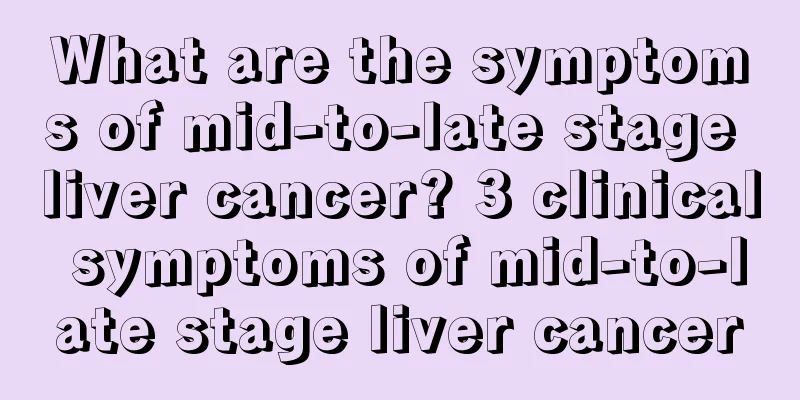Pregnant after taking mycoplasma medicine

|
The drugs used to treat mycoplasma infections are mainly antibiotics. You should not get pregnant while taking these drugs. Both the drugs and the disease itself may have a great impact on the fetus. However, in daily life, some people accidentally get pregnant while taking medicine, and they are very worried about problems with the fetus. So, what should I do if I get pregnant after taking mycoplasma medicine? Let’s take a look below. The disease is self-limiting, and most cases can heal themselves without treatment. The use of appropriate antibacterial drugs can alleviate symptoms and shorten the course of the disease. Taking medications in early pregnancy will have a certain impact on the fetus, but the specific situation varies from person to person depending on the nature of the medication, the dosage taken, and personal physical factors. It is recommended to have regular prenatal check-ups and closely observe the development of the fetus. After 50 days of pregnancy, an ultrasound examination should be performed to check the fetal heart rate and fetal bud development. Down syndrome screening is performed between 14 and 19 weeks of pregnancy to rule out the possibility of Down syndrome in the fetus. Perform four-dimensional color ultrasound at 22-26 weeks of pregnancy to rule out the possibility of fetal malformation. Reference for medication use during pregnancy Please use medication correctly under the guidance of a doctor Penicillin: relatively safe, including broad-spectrum penicillins such as piperacillin. Oral administration, intramuscular injection, and intravenous infusion can all be used for pregnant women. Warning: Use according to the recommended dosage and do not exceed the recommended dosage. Erythromycin: Other similar drugs include erythromycin and roxithromycin. They have a large molecular weight and are not easy to pass through the placenta to reach the fetus. They can be used by people who are allergic to penicillin. They are the first choice for chlamydia and mycoplasma infections. Cephalosporin: No teratogenic effect is known from current data. Dangerous Drugs Report Form Tetracycline: It can cause yellow-brown pigmentation of teeth, or be stored in the bones of the fetus. It can also cause acute fatty liver and renal insufficiency in pregnant women. Gentamycin: Kanamycin, Gentomycin, etc. can cause damage to the fetal auditory nerve and kidney. Chloramphenicol: causes gray baby syndrome. Co-trimoxazole, enhanced sulfamethoxazole tablets: can cause jaundice in neonates and can also antagonize folic acid. Furantoin: It is often used by women with urinary tract infections, but it should be used with caution because it can cause hemolysis. Vancomycin: Although there are no reports of risk to the fetus, it is nephrotoxic and ototoxic to pregnant women. Ciprofloxacin, norfloxacin, and chlorpheniramine: Irreversible arthritis occurred in dog experiments. Anti-tuberculosis drugs: Consider the pros and cons when using and consult your doctor based on your own situation. Antifungal drugs: clotrimazole, nystatin, griseofulvin. Pregnant women should not use them. Antiviral drugs: Not recommended for use in pregnant women. Metronidazole: Insecticide, used to treat Trichomonas infection. It is recommended not to be used during early pregnancy. Spiramycin: Treats toxoplasmosis infection and has no adverse effects on the fetus. Anthelmintics: They are teratogenic in animals and should be used with caution. Digoxin: A cardiotonic drug that easily crosses the placenta and has no obvious adverse effects on the fetus. It can be used by pregnant women with heart failure. β-blockers: There are reports of causing fetal growth retardation. Antihypertensive drugs: Angiotensin converting enzyme inhibitors such as captopril and angiotensin II receptor antagonists such as losartan are contraindicated in pregnant women because of their clear teratogenic effects. Other types of antihypertensive drugs, such as the representative calcium ion antagonist, cingulidine, may cause decreased uterine blood flow. Diuretics administered near term can cause neonatal thrombocytopenia and should be used with caution. Acetazolamide has caused limb malformations in drug experiments and should not be used by pregnant women. Drugs for treating asthma, such as theatropine, epinephrine, sodium cromolyn, and prednisone, have no teratogenic effects. Anticonvulsant drugs: The incidence of congenital malformations in the fetus of women who take anticonvulsant drugs during pregnancy is 2-3 times that of the latter. Commonly used ones include phenytoin sodium, carbamazepine, trimethoate, valproic acid, etc. Antipsychotic drugs: All have teratogenic effects. Sedatives: such as diazepam and sedation, some of which may cause teratogenic effects. Painkillers: Paracetamol can produce liver toxicity. Aspirin may be associated with oligohydramnios and premature closure of the fetal ductus arteriosus. Ibuprofen, naproxen, and indomethacin can cause constriction of the fetal ductus arteriosus, leading to pulmonary hypertension and oligohydramnios. Indomethacin should not be used after 34 weeks of pregnancy, as it can cause adverse effects such as fetal intraventricular hemorrhage, pulmonary bronchial dysplasia, and necrotizing enterocolitis. Antiemetic drugs: No abnormal increase in medication was observed. Anti-tumor drugs: have clear teratogenic effects. Immunosuppressants: Azathioprine and cyclosporine are obviously toxic to the mother and the fetus. Vitamin A: Large amounts of intake can cause birth defects. The minimum teratogenic dose for humans is 25,000-50,000 iuld. Vitamin A isomers: In the treatment of skin diseases, isotretinoin can produce various malformations when used during embryogenesis. Etretinate aromatic retinoic acid: used to treat psoriasis, has a very long half-life, and the drug can still be detected in plasma after stopping the drug for > 2 years, so conception should be avoided at least 2 years after stopping the drug. Hormones: Danazol and diethylstilbestrol are not suitable for use by pregnant women. Oral contraceptives have definite teratogenic effects. |
<<: What is the disease of mycoplasma double positive
>>: The ratio of turtle soaking in glucose
Recommend
How to check if there is anemia in blood test?
In fact, there are quite a lot of people sufferin...
What shoes are suitable for girls in autumn
Autumn is a season of alternating heat and cold. ...
What should you pay attention to after chemotherapy for lung cancer
Lung cancer patients must closely observe and rec...
What are the methods of using plant hair dye
In our lives, plant hair dyes are used by many mi...
Three very important brain cancer care methods
After suffering from brain cancer, many parts of ...
What to do if you have liver cancer and you sleep while sitting
Liver cancer is a very common malignant tumor of ...
What are foodborne diseases
Foodborne diseases are of great concern in clinic...
What to do if students are tired of studying
We all have been students, and at different times...
How to treat extension type supracondylar fracture of humerus
Clinically, supracondylar humeral fractures are d...
Feeling groggy and confused all day long
Many people may have experienced this phenomenon,...
How to prevent breast cancer better? 4 tips to prevent breast cancer
Breast cancer poses a huge threat to women's ...
What are the contraindications for the treatment of chickenpox?
Chickenpox is a highly contagious disease and is ...
What are the causes of occult blood in urine?
Many friends may not understand what urine occult...
I feel like vomiting after eating because of a cold
Everyone is bound to catch a cold in life, and th...
What are the factors that lead to increased alpha-fetoprotein? There are these six points
The concentration of alpha-fetoprotein is affecte...









